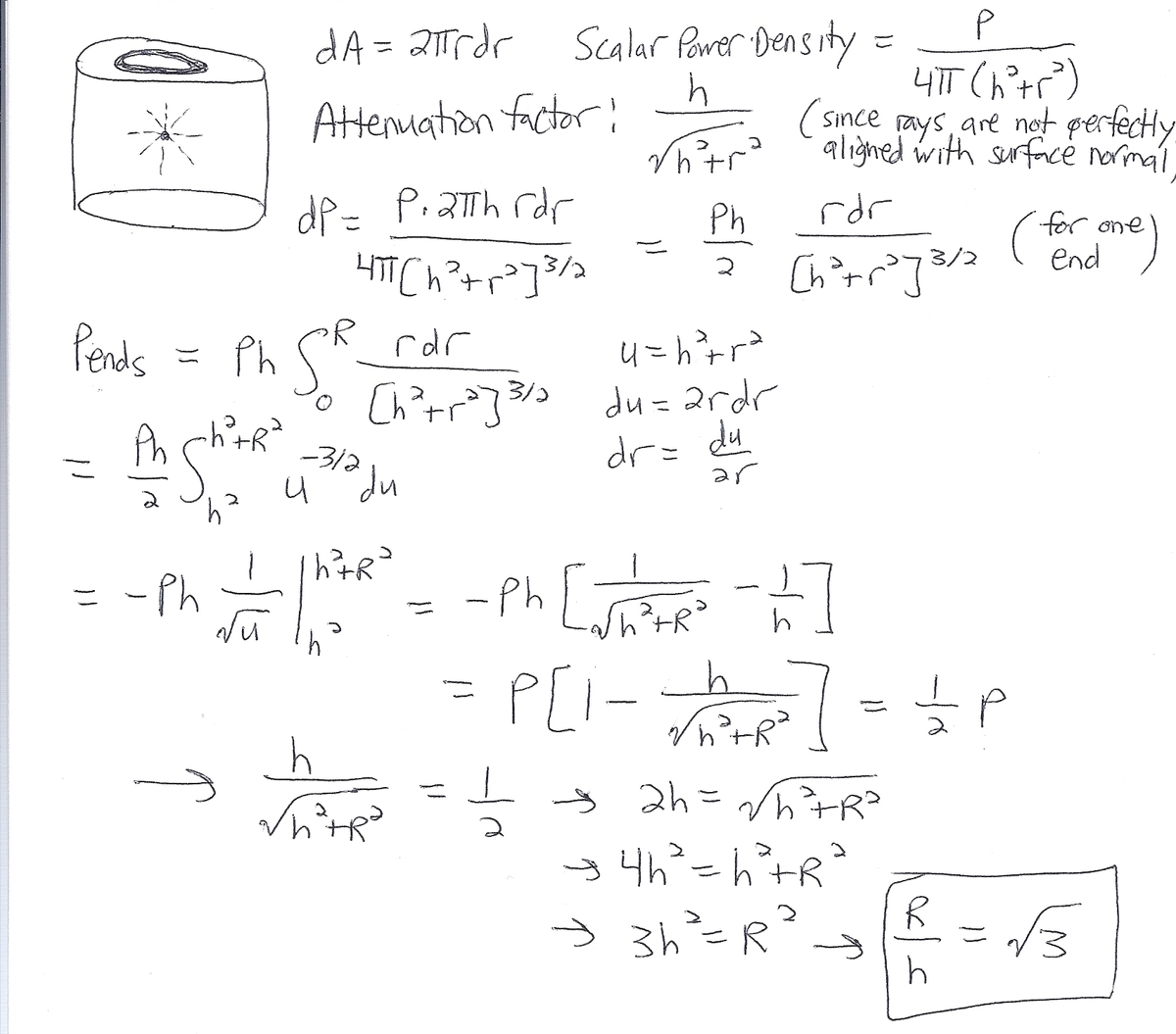Light Source in Cylinder
There is an isotropic light source at the center of a hollow right circular cylinder of height and radius .
If half of the radiant power is incident upon the two circular end pieces combined, determine the ratio to 3 decimal places.
Assumption: Neglect reflections.
Hint: Make sure that when you integrate over the entire cylinder, you get the source power.
The answer is 1.732.
This section requires Javascript.
You are seeing this because something didn't load right. We suggest you, (a) try
refreshing the page, (b) enabling javascript if it is disabled on your browser and,
finally, (c)
loading the
non-javascript version of this page
. We're sorry about the hassle.

Each circular end-piece subtends a solid angle ∫ 0 tan − 1 λ d θ ∫ 0 2 π d ϕ sin θ = 2 π ( 1 − λ 2 + 1 1 ) where λ = h R . This solid angle should be equal to π for the required condition to be true, so that λ 2 + 1 = 2 , and hence λ = 3 .